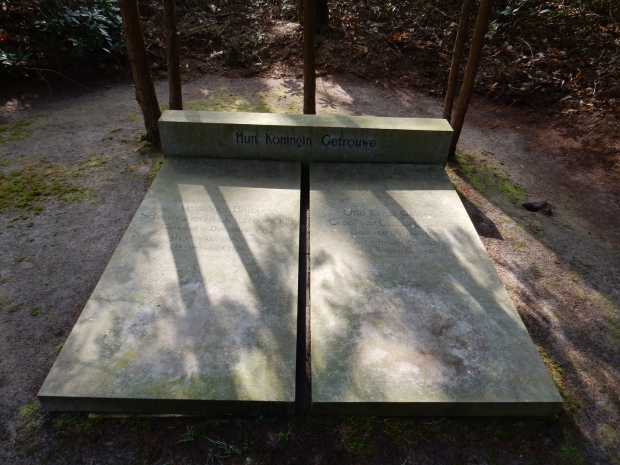Who will remember you when you’re gone? Personally, I hope to leave a gaping hole in many lives when I shake the mortal coil, but I probably won’t. I guess the reality is it’d be great if they don’t say, “Good riddance!”
Which brings us to Otto Ernst Gelder, Graaf (which is Dutch for Count) van Limburg Stirum, Audrey Hepburn’s uncle. When Audrey was interviewed over the course of her screen career, she very occasionally mentioned an uncle who had been shot by the Nazis. Never his name, never any specifics, never an emotional reaction. At the beginning of my project that became Dutch Girl: Audrey Hepburn and World War II, I wondered who this man was and why she didn’t talk about him. His name was easy to find, but facts about “Uncle Otto” proved, at first, elusive.

Wilhelmina, her husband Otto, and Ella before the war.
Slowly, through my own digging and that of two researchers, Maddie in the Netherlands and Marina in the States, Uncle Otto’s story emerged. He was a scholar, a lawyer, a Presbyterian, and a man of compassion, good humor, and optimism. He was deeply in love with his wife Wilhelmina, sister of Audrey’s mother Ella. Otto enjoyed, up until May of 1942, a good life and a career he believed in—as a reform-minded district attorney in Arnhem.
Then the war came, bringing with it the occupation of the Netherlands, and Otto’s principles didn’t allow for Nazi doctrine. His outlook on life didn’t change a bit; he was certain he must not cooperate with the Nazis and he remained a cheerful optimist.
The more I learned about him, the more I realized how central Audrey’s uncle was to her life. His fate changed the history of the van Heemstras, Audrey’s family, and shaped beliefs that drove a movie star to become UNICEF’s good will ambassador.
I went from knowing nothing about Otto to thinking, what a guy! His story inspired a chapter in the book, a chapter that barely mentions Audrey. I knew I was gambling to do such a thing in a book about “Audrey Hepburn and World War II,” and yet I came back to the fact that his fate drove hers. I didn’t feel I had any choice but to proceed.
The mystery of Audrey’s connection to loved ones lost in the war deepened when she mentioned “a cousin” who had also been executed by the Nazis. Same situation as with Otto; never a name, just a vague descriptor. It turned out this cousin was Alexander, Baron Schimmelpenninck van der Oye, who did indeed appear in her family tree, way over on the other side. And lo and behold, Otto and Alexander died the same morning in the same place, executed by green police. Now they lie side by side at the execution site.

Alexander, Baron Schimmelpenninck van der Oye.
As of 2017, the names of Otto, Count van Limburg Stirum, and Alexander, Baron Schimmelpenninck, seemed to exist only in Dutch archives and on their grave markers. What an injustice this was for men who died heroes of the people. The place of the execution of Otto, Alex, and their three companions—Willem Ruys, Christofel Bennekers, and Robert Baelde—is located on private property near the border of the Netherlands and Belgium. The Germans wanted to carry out the executions in a place so remote that it couldn’t become a shrine to martyrs. The spot can be accessed only by foot or on treacherous dirt roads that could easily flatten a tire or snap an axle. Signs reading “15 Augustus 1942” point the way for the curious, but even the signs are in disrepair. Yet every August 15 determined Dutch men and women attend a service at the murder site to remember “The Five” who were taken by the Nazis.
Year by year, the attendees of this remembrance age. Now it’s been 77 years since that awful morning and generations have come and gone. At this late date, who beyond family members will bear the torch for these five who died heroes in the cause of freedom from oppression?
If I can accomplish one thing for the legacy of Dutch Girl, one thing above all else, even above filling in the gap in Audrey’s timeline, it’s for this book to return to the Netherlands a piece of its own history, stories not only of Otto and Alex but also of the van Heemstras and many brave individuals and groups who refused to knuckle under to tyranny, whatever the cost.

Schimmelpenninck and van Limburg Stirum rest side by side at the execution site.